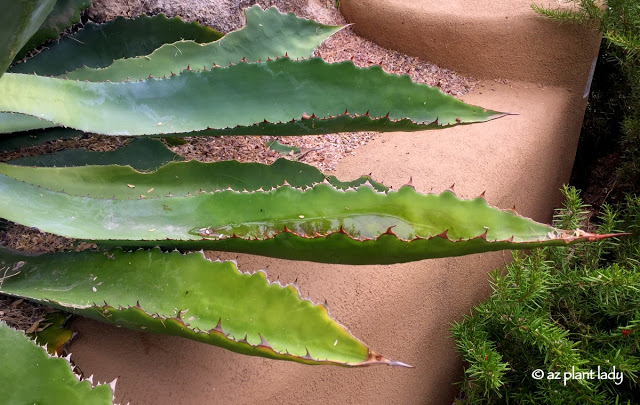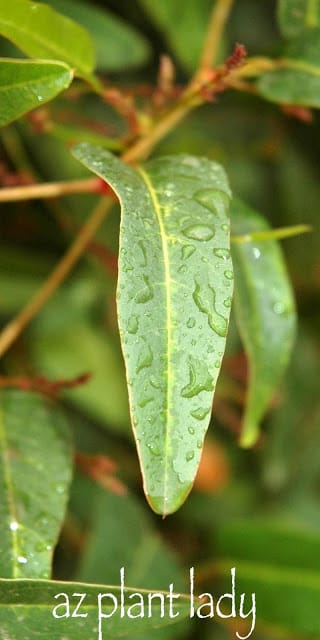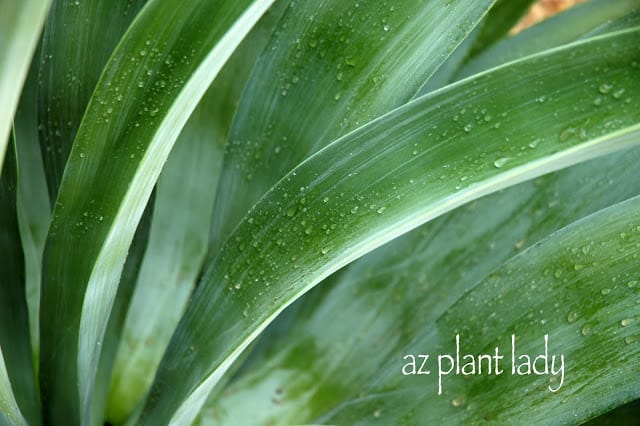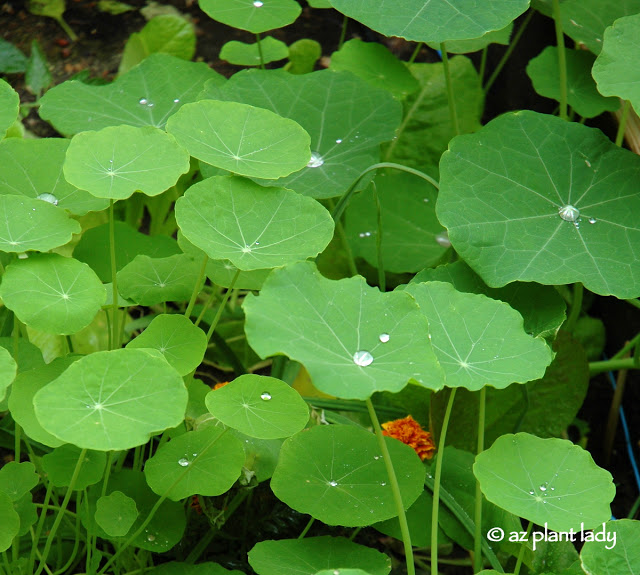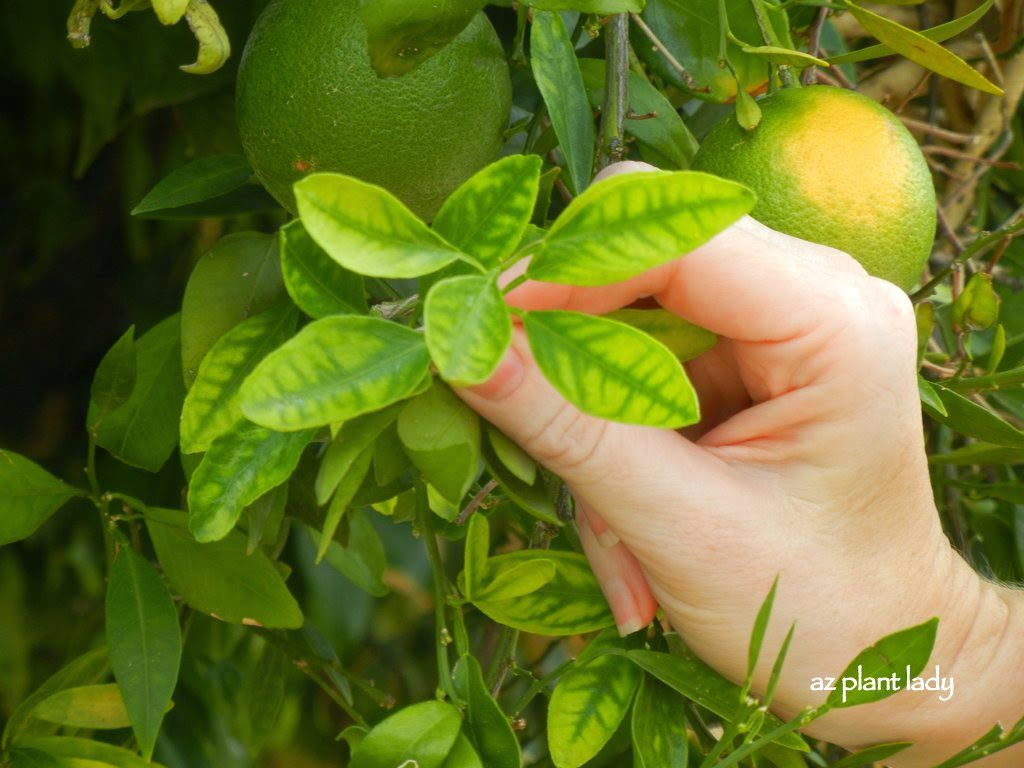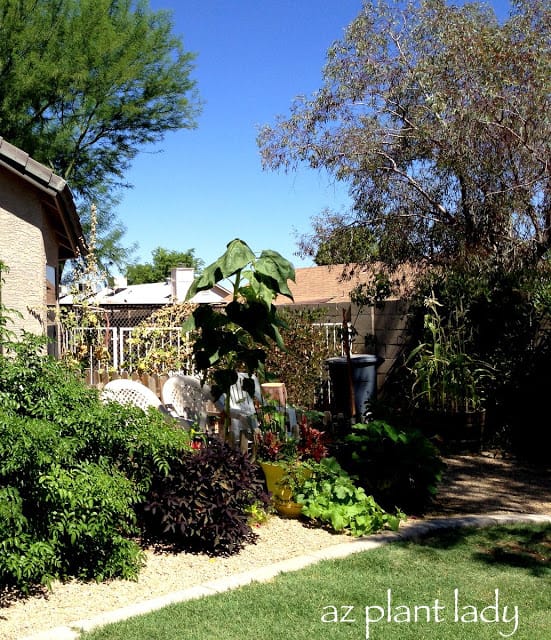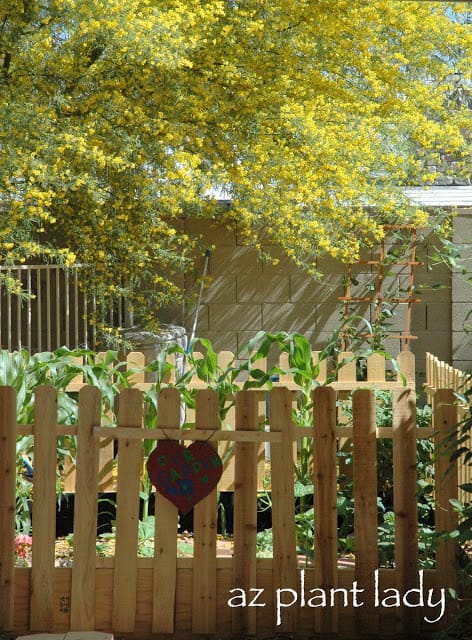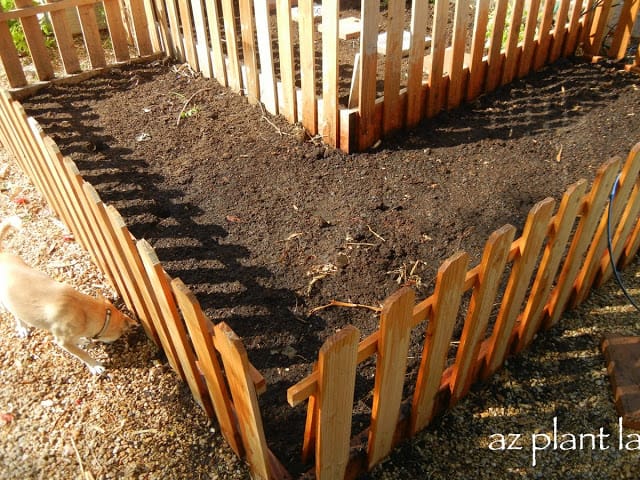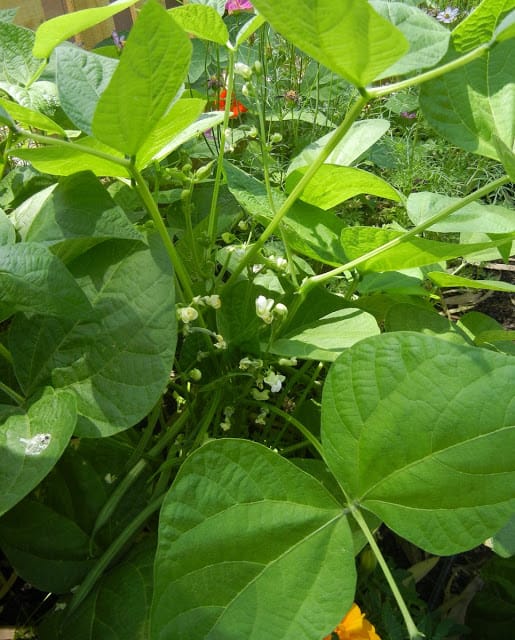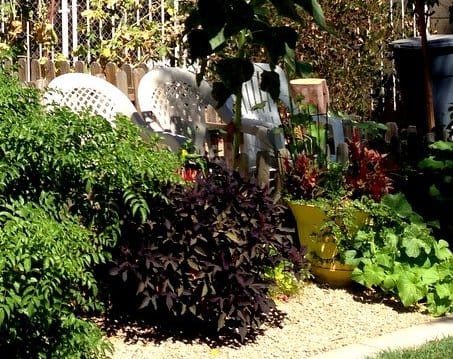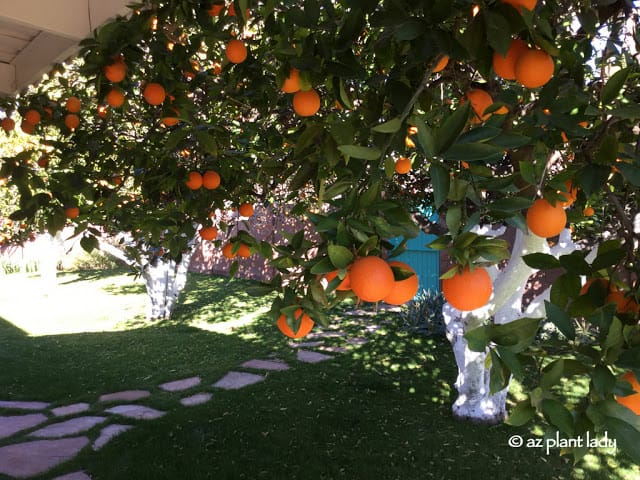I hope you enjoyed the grand tour of my edible garden that I created in my side yard.
Today, I would like to show what is happening in my original vegetable garden…
As you can see, there is a lot growing in this area.
Among the vegetables is a giant sunflower, pots filled with ornamental plants AND vegetables and hollyhocks that have finished flowering can be seen alongside the garden.
Off to the right side, you can see my container corn.
And yes, those are plastic patio chairs inside my vegetable garden. (I’ll explain why later.)
This edible garden is actually made up of three parts. My original vegetable garden was a fenced in square space. Like many gardeners who like to grow their own food, I realized that I needed more space – so we added on an extension a couple of years ago…
The third part of my edible garden consists of vegetables growing in containers along with ornamental plants…
I currently have zucchini growing in the closest pot along with a jalapeño plant, parsley and sweet potato vines.
The middle pot is filled with a Thai pepper plant, chives, cucumber, celosia and kangaroo paw.
The third (and my most favorite container) has a bell pepper plant, cinnamon basil, green & purple sweet potato vines, dianthus and angelita daisy growing inside.
The outer vegetable garden is filled with sunflowers and bush beans.
Our family loves to eat ‘string beans’. They are easy to grow and to freeze for later.
Here is something that you may not know about growing beans. “They make their own nitrogen, so you don’t need to add any nitrogen fertilizer.”
In fact, if fertilize them with a fertilizer that contains nitrogen – it can cause them to grow beautiful leaves, but not beans. That is because there needs to be a balance between the other major nutrients – phosphorus and potassium.
If you do apply a fertilizer, make sure that contains a low amount of nitrogen.
I have lots of cucumbers growing in the original vegetable garden along with a couple of pumpkin plants.
As a child, I grew up calling cucumbers ‘gurkens’, which is what they are called in German. I spent some time when I was young, in Germany, visiting my grandparents while my grandfather was working over there.
I love cucumbers and we eat them 3 or 4 times a week.
It can be a little hard to spot ripe cucumbers. Most of my cucumber plants are growing up onto the trellis, but sometimes you can find cucumbers growing on the ground. You need to move the leaves aside to see them.
I like to eat cucumbers with salad, using my grandmother’s ‘top secret’ salad dressing recipe.
I only wish that I could grow cucumbers and leaf lettuce at the same time….
Okay, back to the patio chairs sitting in my garden.
Why on earth would I place chairs in my garden?
Well, they are an easy way to provide shade for vegetables that quickly wilt in the full sun.
And so, that is what is going on in my edible gardens this summer.
**I am excited to share with you a gardening video that I made for Troybilt as a part of my involvement with the ‘Saturday 6″.
I’ll debut it for you on Monday 🙂
